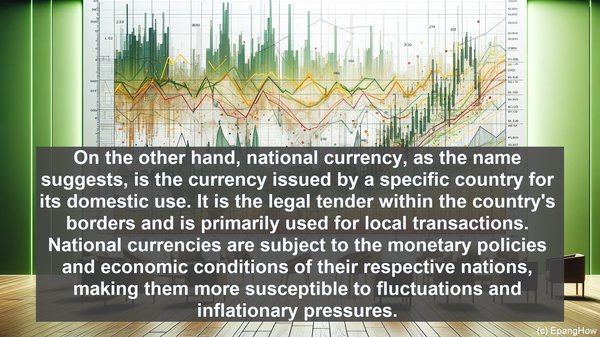Introduction: The Backbone of Global Finance
Hello, everyone! Welcome to our article on the intriguing world of reserve currency and national currency. These two terms form the bedrock of the international monetary system, and understanding their distinctions is crucial for comprehending the dynamics of global finance.

Defining Reserve Currency: The Global Favorite
A reserve currency is a currency that central banks and governments hold in significant quantities as part of their foreign exchange reserves. It serves as a reliable store of value and a medium for international transactions. Historically, major reserve currencies include the US dollar, the euro, the British pound, and the Japanese yen. The status of a currency as a reserve currency is often a testament to the economic and political might of the issuing country.

National Currency: The Domestic Workhorse
On the other hand, national currency, as the name suggests, is the currency issued by a specific country for its domestic use. It is the legal tender within the country’s borders and is primarily used for local transactions. National currencies are subject to the monetary policies and economic conditions of their respective nations, making them more susceptible to fluctuations and inflationary pressures.
Key Differences: Scope and Functionality
One of the key distinctions between reserve currency and national currency lies in their scope of usage. While national currency is limited to a specific country, reserve currencies have a global reach. They are widely accepted in international trade, and their stability and liquidity make them a preferred choice for cross-border transactions. Additionally, reserve currencies often serve as benchmarks for commodity pricing, further solidifying their significance in the global economic landscape.
The Role of Reserve Currencies in Economic Stability
Reserve currencies play a crucial role in maintaining global economic stability. Countries with reserve currencies enjoy certain advantages, such as reduced exchange rate volatility and lower borrowing costs. Moreover, the status of a currency as a reserve currency can enhance a country’s geopolitical influence and facilitate its access to international markets. However, it also places responsibilities on the issuing country, as its monetary policies and economic decisions can have far-reaching consequences beyond its borders.
Evolution and Challenges: The Shifting Dynamics
The landscape of reserve currencies is not static. Over the years, there have been shifts in dominance, reflecting changes in global economic dynamics. For instance, the US dollar has been the primary reserve currency for decades, but the rise of emerging economies and the increasing internationalization of currencies like the Chinese yuan hint at a potential rebalancing in the future. Additionally, the challenges posed by economic crises, geopolitical tensions, and technological advancements also impact the dynamics of reserve currencies.
